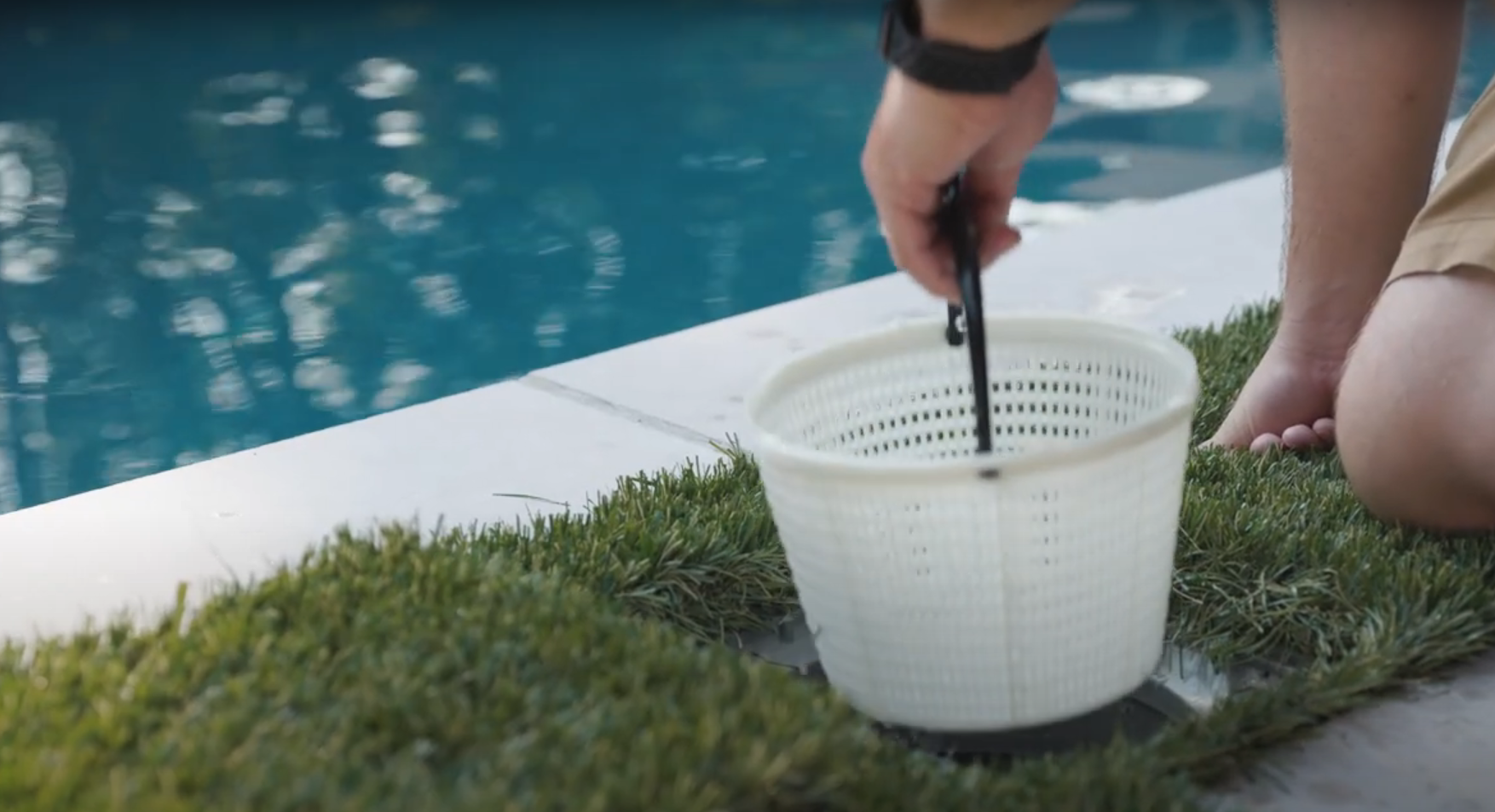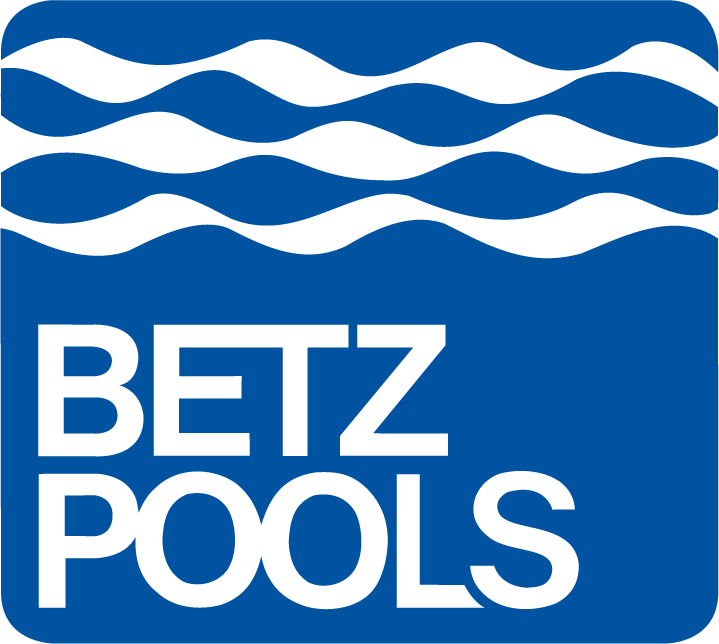Pool care basics – cleaning and sanitizing

Let’s talk about how you can keep your pool in great shape and still have lots of time left over to enjoy it.
The quick answer
- DAILY — check skimmer baskets and empty as needed
- WEEKLY or TWICE-WEEKLY — clean (skim surface, brush walls and floor, vacuum)
- WEEKLY — add sanitizer (chlorine or bromine)
- WEEKLY — test and balance water for sanitizer (chlorine or bromine), total alkalinity and pH
New pool owners are encouraged to have their water tested regularly by a pool professional. Most pool companies provide this as a free service.
Still here? Great! Read on for more information on pool cleaning and sanitizing. I’ll discuss the important steps of how to test and balance your pool water in my next post.
Pool cleaning
- Check the skimmer baskets daily and empty as needed.
- Skim the surface of the pool with a skimmer net to remove floating leaves and debris. If your pool has a raised spa or lower trough, always start skimming from the upper level. This will prevent having to skim twice!
- Give the waterline around your pool a good scrub with a tile brush. This will prevent a scum line from forming on the tile or liner of your pool. A scum line is a collection of dirt and oils that can feed bacteria and algae.
- Brush the walls of the pool and, if needed, the floor. This will loosen algae and other debris into the water. Your sanitizer can kill organic debris more easily once the debris is suspended. All debris will eventually settle onto the floor where it can be vacuumed.
- Once the debris has settled (this could take from an hour or two to a day) vacuum the floor of the pool. Debris may slide down the slope so start in the shallow end and then move down the slope to the deep end. Remember to move slowly with a steady stroke to avoid stirring up any debris.

Pool sanitizing
At Betz Pools the two most common methods for sanitizing or “disinfecting” a pool are using a chlorinator (with chlorine sticks) or a brominator (with bromine tablets) to feed sanitizer to the water. Both methods work in the same manner: water under pressure flows from the filter through a small line to the sanitizer tank. A valve at the tank controls the amount flow. It’s the amount of flow that determines the erosion rate of the chlorine sticks or bromine tablets. The treated water then flows back to the pool through the return line.
This is the simplest method of sanitation and requires only a little work on a weekly basis. Once the flow rate has been set it’s just a matter of adding the sanitizer once a week. The weather and usage of the pool will factor into the amount of sanitizer used, but with the proper flow rate it should maintain a safe level of sanitizer for a week.
Another sanitizer system is the salt system. It’s important to note that a salt water pool is still sanitized with chlorine. It uses a salt generator cell to produce the chlorine. Salt water pools require the same amount of work as a traditional chlorine or bromine pool. The water still needs to be tested and balanced to maintain proper pH and total alkalinity. In addition, salt water pools have a tendency for higher pH levels that need to be adjusted more frequently.
Carry out these tasks once or twice a week or as needed for best results. Note that your pool may need extra cleaning and/or sanitizing after events like heavy use or windstorms.
Stay tuned for my upcoming post on testing and balancing your pool water. Proper testing and balancing helps keep swimmers safe while protecting your pool surfaces and equipment. Heads up: you’ll need to know the water volume of your pool!

Brian Lilleberg
Betz Pools
Want even more information on pool care? Feel free to get in touch.
Surfing the Internet is a good start. But your single most important step for pool information is to contact a certified pool professional to make sure you get the custom advice you need.
We’d love to hear from you! Connect with us on Facebook, Twitter, Houzz, YouTube and Pinterest.
